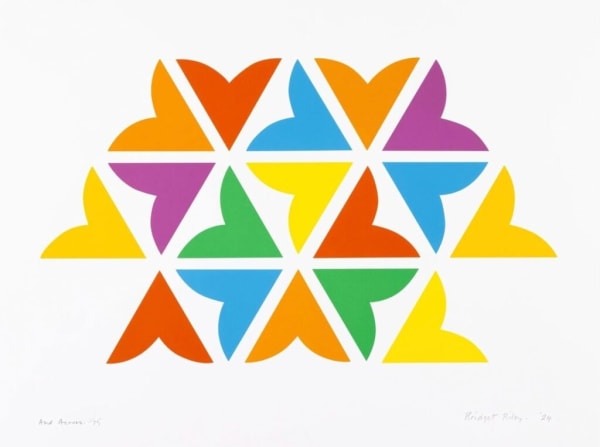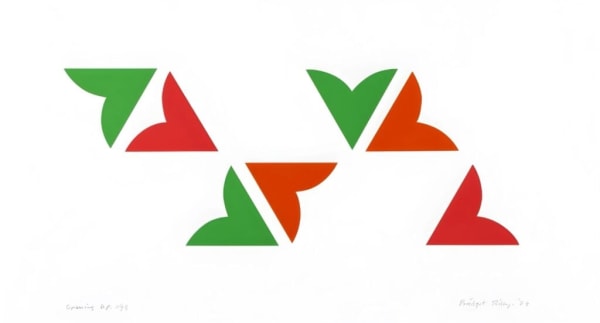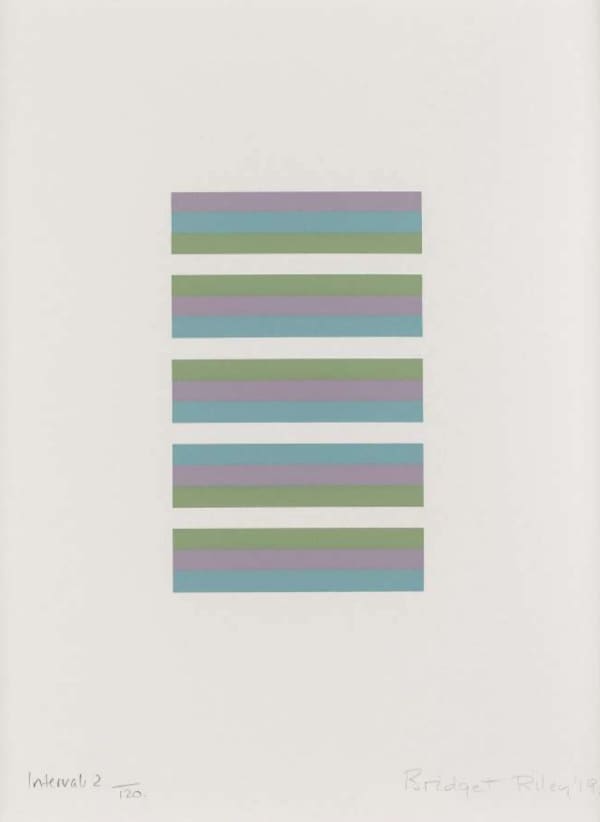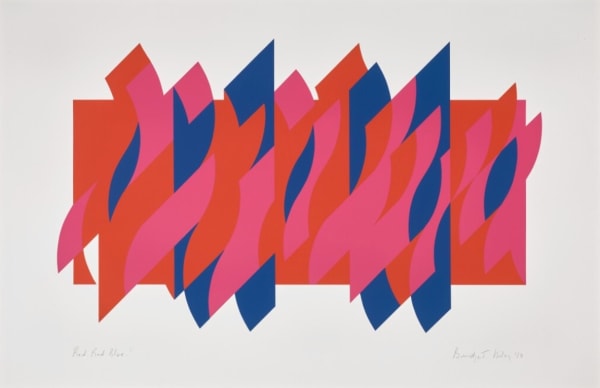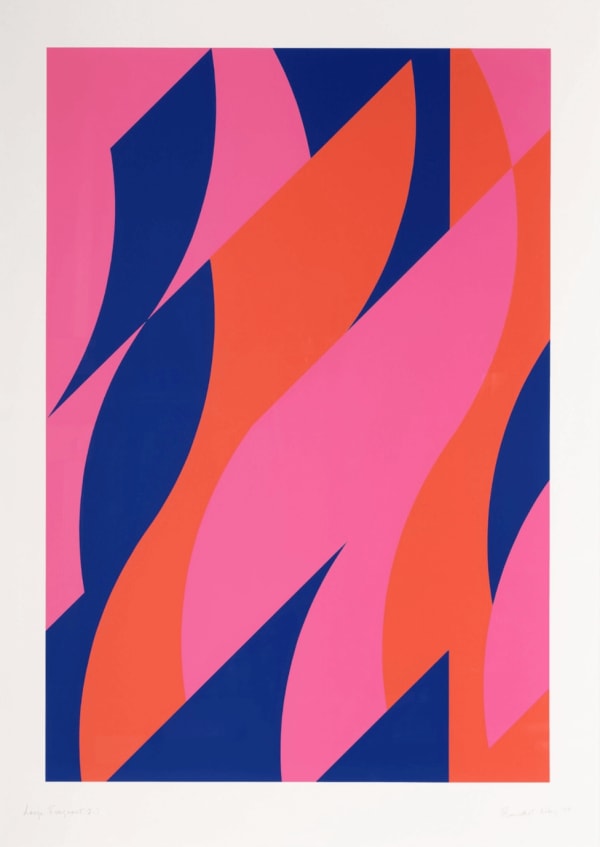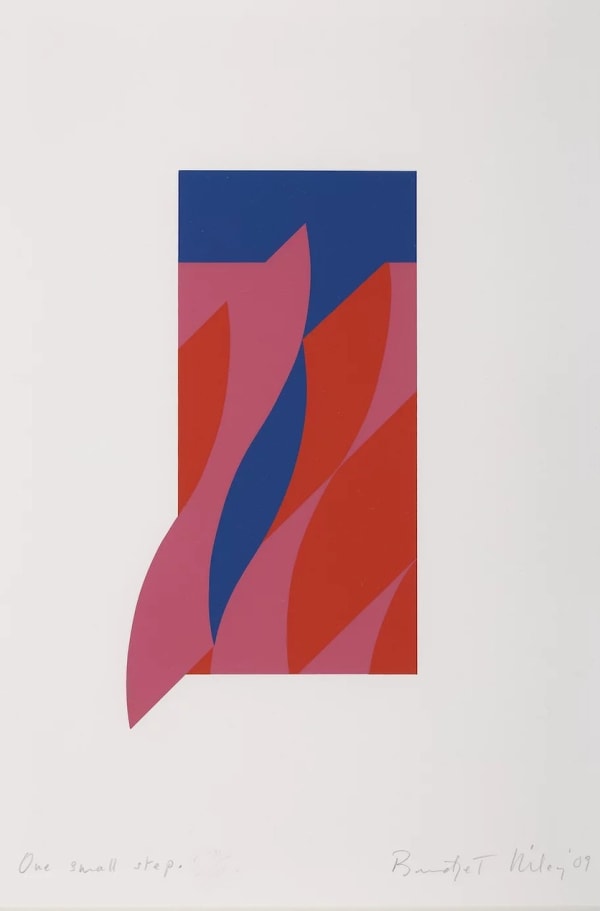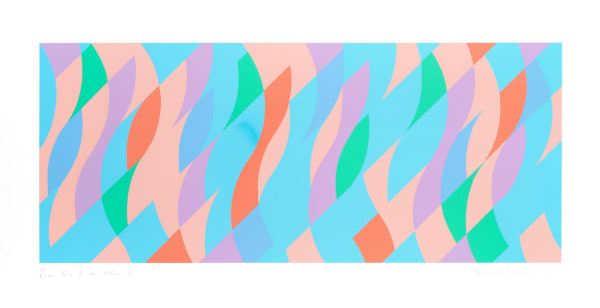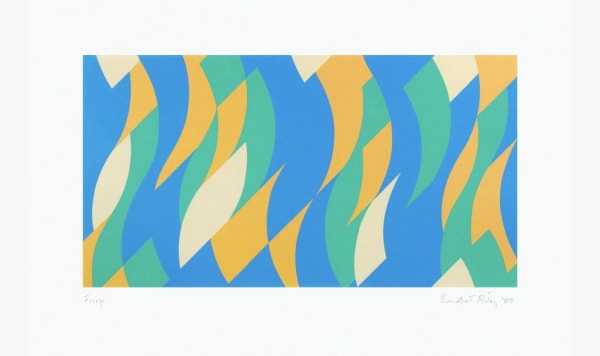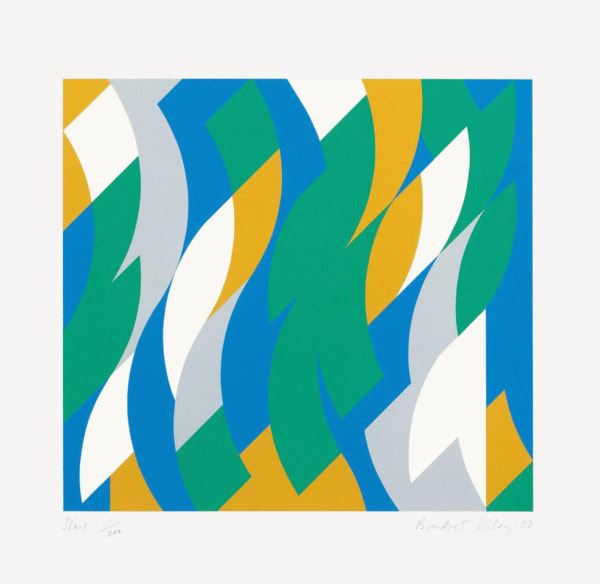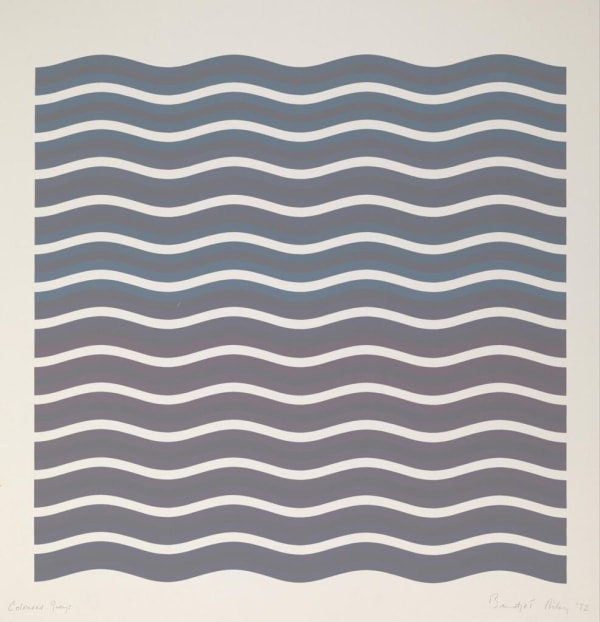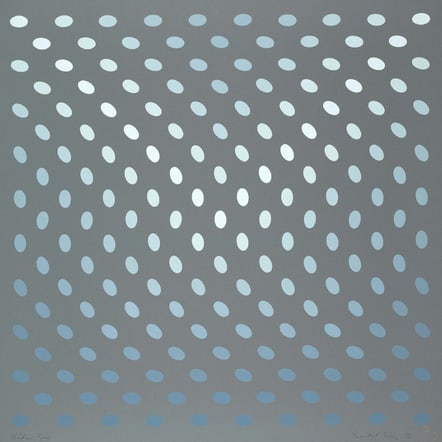-
 And Across, 2024
And Across, 2024 -
 Opening Up, 2024
Opening Up, 2024 -
 Intervals 2, 2019
Intervals 2, 2019 -
 Red Red Blue, 2010
Red Red Blue, 2010 -
 Large Fragments 2, 2009
Large Fragments 2, 2009 -
 One Small Step, 2009
One Small Step, 2009 -
 About Lilac, 2007
About Lilac, 2007 -
 From One To Another, 2005
From One To Another, 2005 -
 Going Across, 2001
Going Across, 2001 -
 Frieze , 2000
Frieze , 2000 -
 Start, 2000
Start, 2000 -
 Coloured Greys (2), 1972
Coloured Greys (2), 1972 -
 Nineteen Greys (A), 1968
Nineteen Greys (A), 1968 -
 Nineteen Greys (C), 1968
Nineteen Greys (C), 1968 -
 La Lune En Rodage, 1965
La Lune En Rodage, 1965
Riley became famous for her bold, geometric abstract works that manipulate visual perception, creating optical illusions of movement, depth, and light.
Born on April 24, 1931, in London, Bridget Riley is a British painter known for her pioneering work in the Op Art movement, which emerged in the 1960s. Riley became famous for her bold, geometric abstract works that manipulate visual perception, creating optical illusions of movement, depth, and light.
She studied at the Cheltenham Ladies' College before attending the Royal College of Art in London, where she was influenced by both modernist traditions and the emerging trends in contemporary abstract art.
Riley's early work was inspired by artists such as Paul Klee and Jean Arp, who explored abstraction and the use of color and form. In the late 1950s and early 1960s, Riley began to experiment with a distinct style that would become associated with Op Art (short for "Optical Art").
She rose to prominence in 1965 with her painting Movement in Squares, which demonstrated her ability to create the illusion of movement and three-dimensionality using only precise geometric patterns. Her works often feature bold, rhythmic patterns of black and white or vibrant colors that seem to vibrate, warp, or shift as the viewer’s eye moves across them.
Riley's signature works involve intricate patterns of stripes, curves, and circles that appear to pulse or oscillate. The effect is not a result of physical movement but rather a psychological phenomenon, where the static images appear to vibrate or even move. Some of her most iconic pieces include:
Throughout her career, Riley experimented with color and form, shifting from black-and-white pieces to more colorful works, such as the "Stripe" series and "Kinetic" series, where her interest in the psychology of perception and color theory is evident.
Riley's work was central to the development of Op Art, and her influence extends beyond the visual arts. Her art has been applied in graphic design, fashion, and architecture, and her pioneering role in exploring the interplay between perception, motion, and color has made her a key figure in 20th-century art.
Riley's works were widely exhibited during the 1960s and 1970s, including her participation in landmark exhibitions such as the 1965 "The Responsive Eye" show at the Museum of Modern Art in New York, which introduced Op Art to a wider international audience.
In the 1970s and beyond, Riley's style continued to evolve. She began to introduce more organic forms and colors into her work, moving away from purely geometric abstraction to incorporate a more fluid sense of rhythm. Her later pieces, like "Eclipse" (1990), reveal a greater complexity in her use of color and form.
Riley has received numerous accolades throughout her career, including recognition for her contributions to contemporary art, and her work is held in major collections around the world, including the Tate Gallery in London and the Museum of Modern Art in New York.
